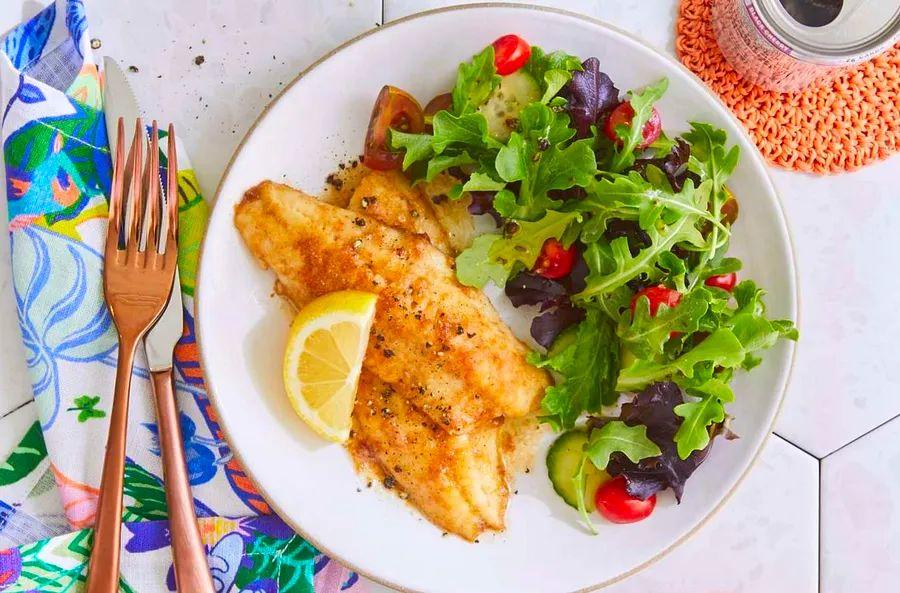The Ultimate Beginner's Guide to Buying and Preparing Seafood

Many people prefer to enjoy seafood at restaurants, but cooking it at home is easier than you might think. We'll simplify the process of selecting and storing seafood, along with sharing easy recipes and tips to help you get started. Jump right in and enjoy!
Tips for Choosing the Freshest Catch

Spot Freshness Like a Pro
Fresh fish should smell clean and have vibrant color, with flesh that bounces back when touched. As chef John Livera from the Norwegian Seafood Council says, "A fish will tell you right away if it's worth taking home." Avoid fish that smells too strong, has cloudy eyes, dull flesh, or discolored gills.
Go for Frozen
While fresh fish seems like the better choice, frozen fish can actually preserve more nutrients. According to Valerie Agyeman, a registered dietitian with the Seafood Nutrition Partnership, "Most fish and seafood are frozen right on the boat, locking in nutrients at their peak." To thaw, place frozen fillets in cold water for 30 to 60 minutes (shrimp needs about 20 to 30 minutes), then drain and pat dry.
Consult Your Fishmonger
Don't hesitate to reach out to your local fishmonger. They're experts in selecting the freshest catches, and can guide you on how to store, clean, and prepare your seafood, as well as how long it will stay fresh.
Proper Seafood Storage Tips
Store fresh fish in the coldest part of your fridge and be sure to cook or freeze it within 24 hours of buying it, advises Livera. For freezing, he recommends vacuum-sealing or tightly wrapping the fish in plastic wrap inside a zip-top freezer bag, and it will stay fresh in the freezer for up to three months.
Check for Sustainability
To help protect our oceans and ensure a supply of healthy seafood, it's important to buy from reputable sources that prioritize sustainable and eco-friendly practices.
Look for certification logos from organizations like Marine Stewardship Council, Aquaculture Stewardship Council (ASC), or Best Aquaculture Practices on seafood packaging. These groups assess fisheries, and their seal of approval means the seafood is sustainably sourced.
Check out Seafood Watch for up-to-date recommendations on the most eco-friendly seafood options available.
Simple Seafood Recipes for Newbies
Brown Butter Perch

Toasted brown butter enhances the delicate flavor of perch. If you can't find eight individual perch fillets, you can substitute with one large walleye, dividing it into eight pieces. While their sizes vary, both perch and walleye are lean, firm white fish with a mild, subtly sweet taste.
Editor's Tip: How to Skin Fish. Place the fish skin-side down on a cutting board. Starting from the end closest to you, slide a sharp knife between the skin and the flesh, then work your way toward the opposite end, holding the skin taut as you go. For a whole fish, begin at the tail.
Grilled Salmon with Pineapple-Tomato Salsa

Baking the salmon in broth creates a steamy environment that keeps the fish tender and juicy. Topping it with a fresh pineapple salsa adds a zesty kick and extra moisture, ensuring the fish stays perfectly moist.
Editor's Tip: When is it Done?. A good indicator that your fish is ready is when it flakes easily with a fork. Still unsure? Use a reliable thermometer—fish is safe to eat at 145°F (63°C).
Classic Cioppino

What makes this tomato-based seafood stew so great? Its versatility. We're using shrimp, scallops, clams, mussels, and crab here, but you can add any seafood or fish you like. The result will always be delicious. Don't forget to serve it with warm, crusty bread to soak up the rich broth.
Editor's Tip: How to Avoid Grit. Scallops, clams, and mussels can sometimes contain sand or grit, as they filter water through their shells. While many are pre-purged, it's a good idea to rinse them just before cooking: Rinse raw scallops under cold water and pat them dry. For clams and mussels, soak them in cold water for 20 minutes, then remove with a slotted spoon. Scrub their shells to get rid of any remaining grit, rinse, pat dry, and remove the mussel's beard. Scan the smart code above for more tips on cleaning and debearding.
Fresh Ceviche

Ceviche is a beloved way to cure raw seafood or fish in fresh citrus juices. The seafood is served cold, with the citrus acids denaturing the proteins, giving it a 'cooked' texture without the need for heat. If you can't find bay scallops, simply slice large sea scallops into ½-inch pieces for uniform curing.
Shrimp Grain Bowl

Peeling your own shrimp can be a cost-effective choice. Look for packages labeled "easy peel," which usually means the shrimp are headless and deveined. Shrimp are sized by the number per pound, so the smaller the number, the larger the shrimp.
Editor's Tip: Skillet Alternative. Don't have a grill? Heat 2 tablespoons of olive oil in a 12-inch skillet over medium-high heat. Add the marinated shrimp mixture, and cook, stirring often, until the shrimp turn opaque and the vegetables are browned and tender, about 4 to 5 minutes.
This article was originally published in the April/May 2021 issue of Dinogo Magazine.

1

2

3

4

5
Evaluation :
5/5